Learn the Spanish Conjunctions YouTube
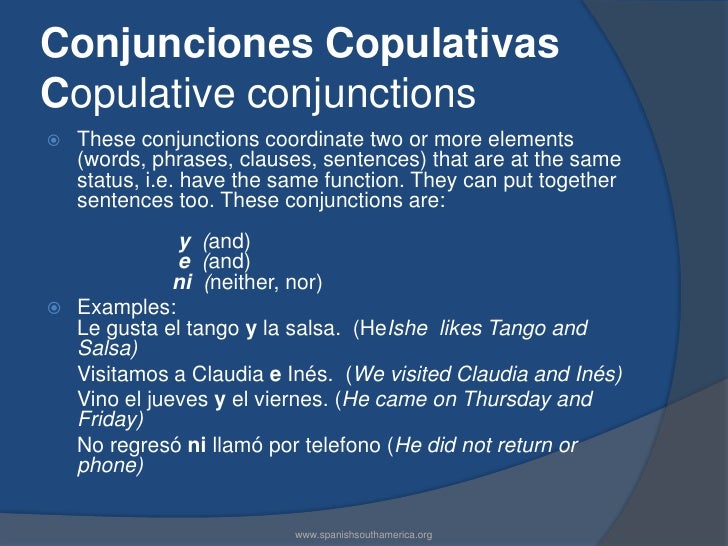
Most Common Spanish conjunctions
Read time11 mins Comments0 Conjunctions are necessary if you want to learn Spanish. Since learning Spanish conjunctions is a must, I'll get right into it. What is a conjunction? A conjunction is a word that links two parts of a sentence together. They can add extra information, contrast a sentiment, and even express a timeframe.
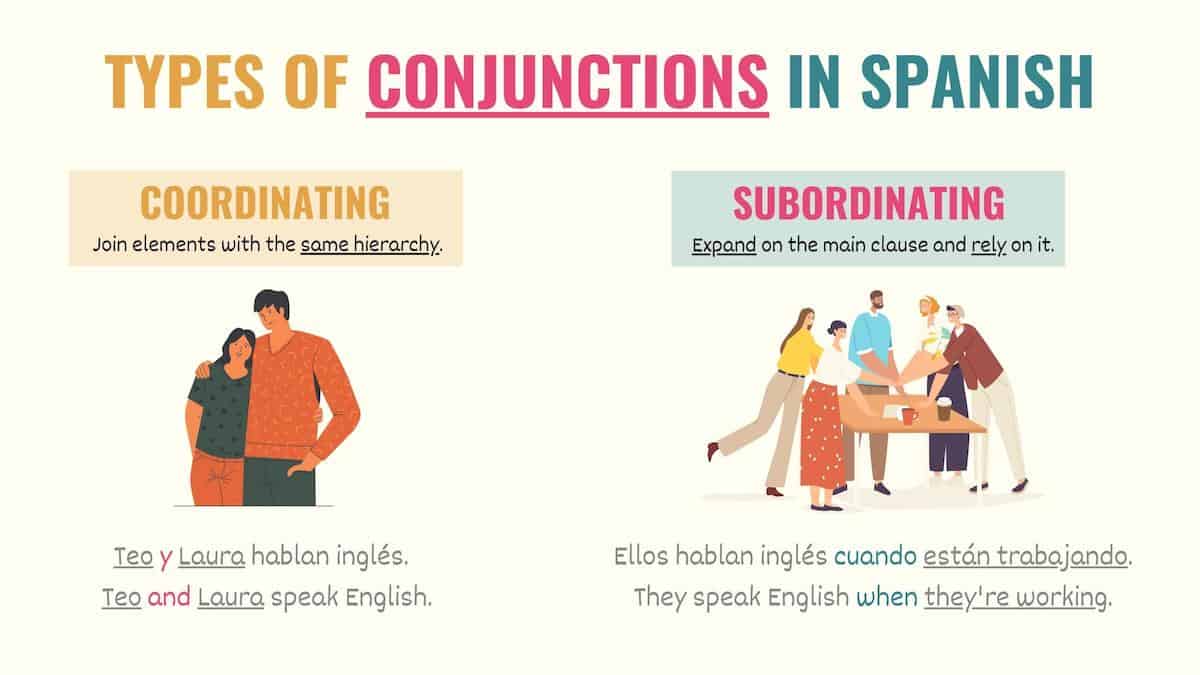
Spanish Conjunctions List of 43 Conjunctions in Spanish
The most widely used conjunctions in Spanish are y which means and, o which is translated as or, pero or but, porque or because and si or if. Y is used to join two sentences to add information. In this case both phrases or sentences are at the same level. If the second word or sentence starts with the letter i or the syllable hi you simply join.
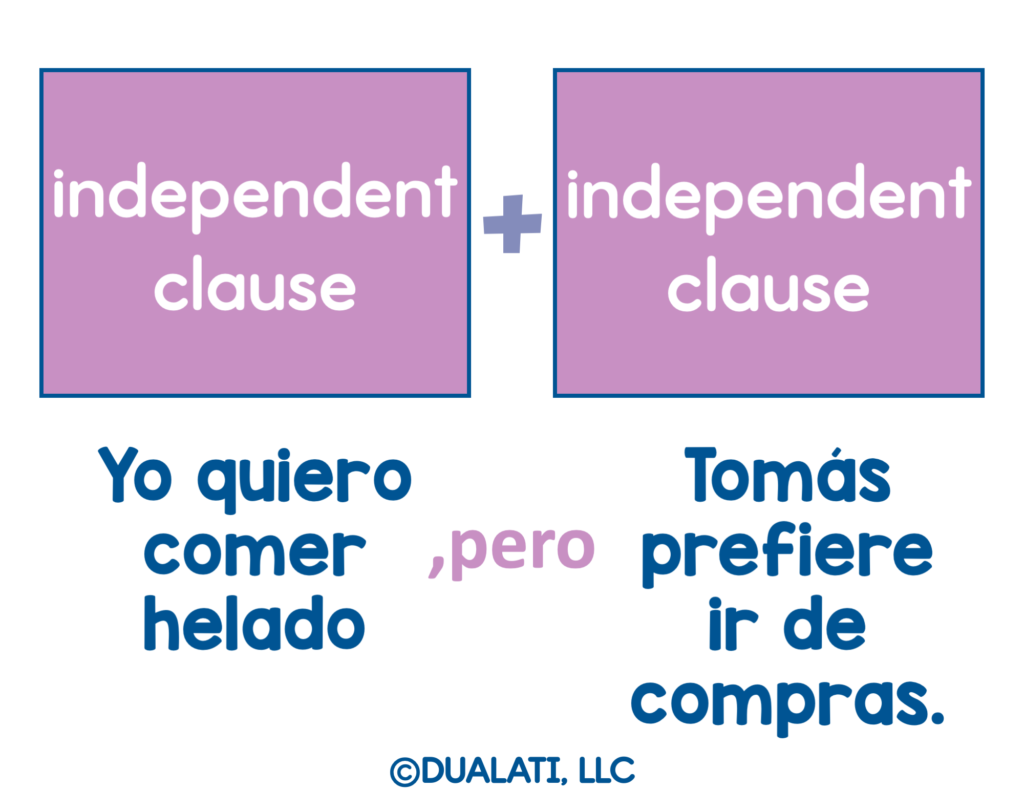
Efficiently teach conjunctions in Spanish with these 3 easy tips! Dualati Edu
Grammar What are the main conjunctions in Spanish? - Easy Learning Grammar Spanish y, o, pero, porque, que and si are the most common conjunctions that you need to know in Spanish: y and el jardín y la casa the garden and the house Note that you use e instead of y before words beginning with i or hi (but not hie).

Spanish lesson 84 Coordinating conjunctions Conjunciones coordinadas Learning spanish
Which Spanish verbs can be followed by the preposition 'a' and the infinitive? Which Spanish verbs can be followed by the prepositions 'con', 'de' or 'en' and the infinitive? When are Spanish verbs followed by the preposition 'a', 'de', 'con', 'en' or 'por' and a noun or pronoun? How do you use 'gustar' in Spanish?

Learn the Spanish Conjunctions YouTube
With over 150 coordinating conjunctions, such as 'y' (and) and 'o' (or), and various subordinating and correlative conjunctions, Spanish offers a wide range of options for connecting ideas. Interestingly, studies show that the most commonly used conjunction in Spanish is 'que' (that), accounting for approximately 40% of conjunction usage.

Spanish Conjunctions The Ultimate Guide + Examples
The cumulative conjunctions in Spanish are: y (e before i- or hi-); ni; ni. ni; tanto… como…; así como…; igual… que…; lo mismo… que…; no solo…, sino también… Example: Cristina es de Valencia y su marido de Murcia. adversative conjunctions contrast ideas or offer corrections and clarifications.

Efficiently teach conjunctions in Spanish with these 3 easy tips! Dualati Edu
Spanish distinguishes two main types of conjunctions: coordinating (coordinantes) and subordinating (subordinates). Each of these types includes different categories. In the following sections, you'll learn the most commonly used Spanish conjunctions in each category.

Spanish lesson How to conjugate Spanish regular verbs • Spanish4Kiddos Educational Services
Conjunctions are a group of small words like pero ('but'), y ('and'), and porque ('because'). In both Spanish and English, conjunctions are used to link words, clauses, and sentences together: Me gustan el té y el café (the conjunction y links two words: el té and el café)

spanish conjugation chart Google Search in 2020 Spanish verbs, Spanish basics, Spanish
Explanation Quick Answer Conjunctions ( las conjunciones) join two coordinating parts of a sentence together. Here are a few of the most common conjunctions you'll come across in Spanish. Common Spanish Conjunctions examples ¿Quieres una manzana o una naranja? Do you want an apple or an orange? Hablo inglés y español.
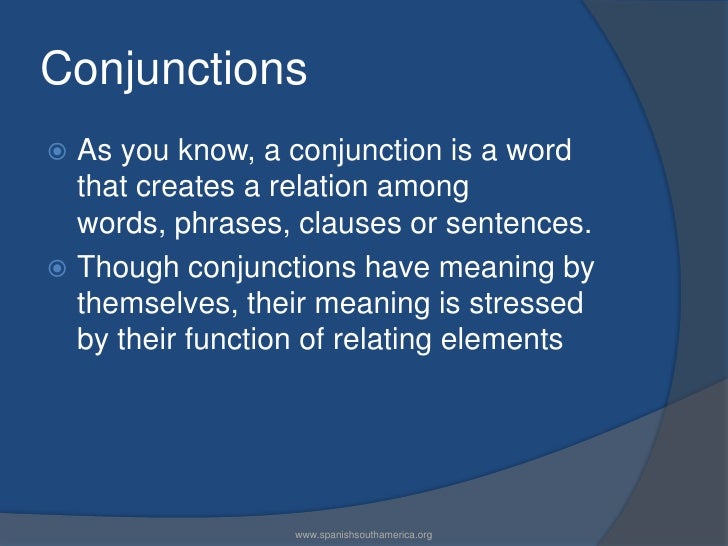
Most Common Spanish conjunctions
Adding with and One of the main uses of conjunctions is to add phrases and clauses together. The most common conjunction for adding is and:. Adding with and. too In speaking, we can also use and. too to connect words, phrases and clauses. Too focuses on the addition:. Adding with as well as and in addition to

Verb hablar conjugation • Spanish4Kiddos Educational Resources
Table of Contents Spanish Conjunctions Review: What are Spanish Conjunctions? Spanish Conjunctions to Correlate Similar Thoughts Spanish Conjunctions to Express Condition Spanish Conjunctions to Express Cause Spanish Conjunctions to Express Opposition Spanish Adverbial Conjunctions Spanish Conjunctions that Offer Alternatives
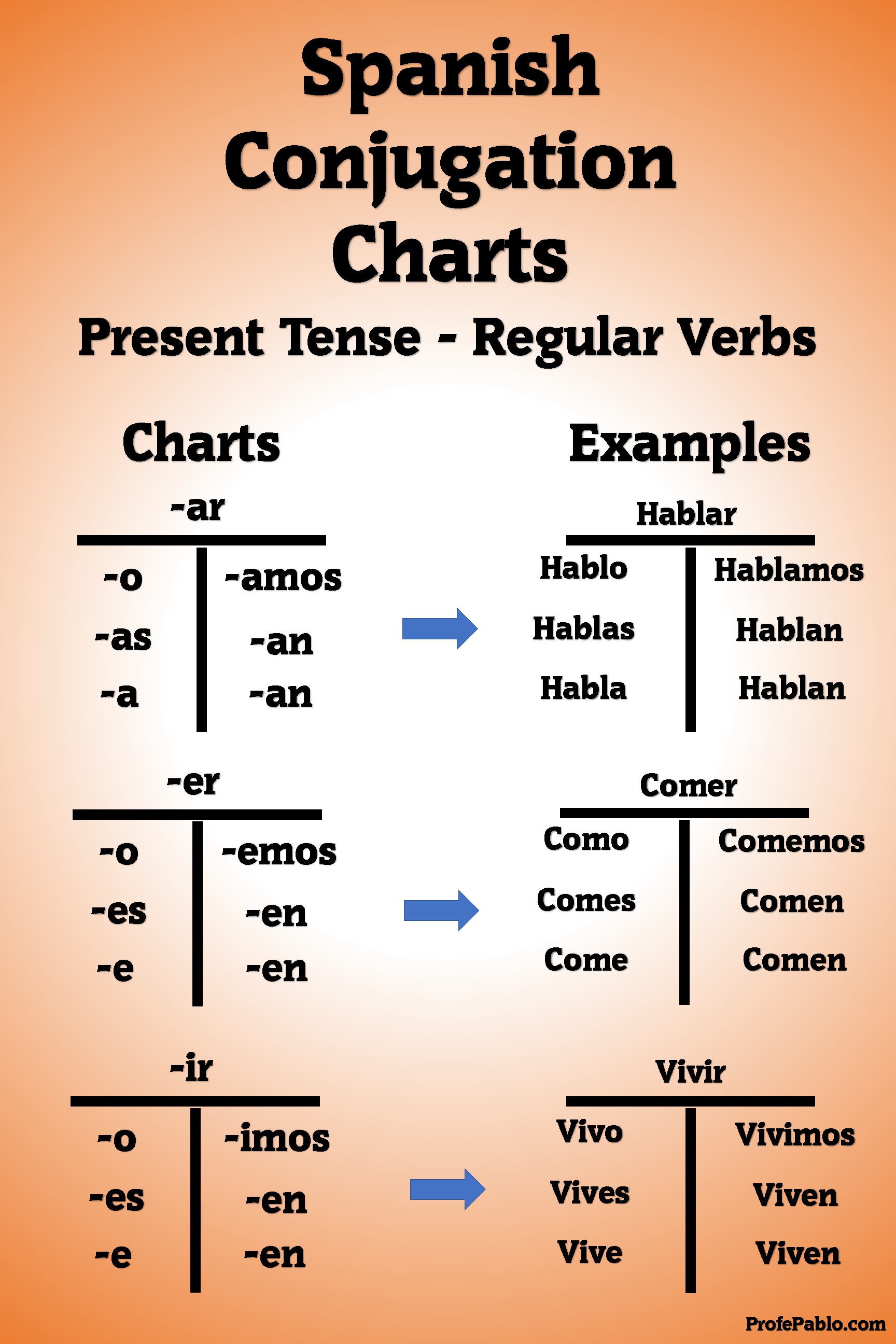
Spanish Present Tense Conjugation Poster 24" X 36" (Latin America)
Spanish conjunctions can be grouped into two categories; coordinating and subordinating. Spanish Coordinating Conjunctions Chart. Coordinating Conjunctions in Spanish (conjunciones de coordinación en español) are used to coordinate or join different words or phrases. See how to use coordinating conjunctions in Spanish.

Spanish Conjunctions A Quick and Easy Guide My Daily Spanish
Rule #2: We use the Spanish conjunction "ni…ni" when negating two or more elements in a sentence. In this type of construction, it's possible to omit the first "ni" as the sentence will already include the negation word "no: Examples: I like neither soup nor salad - No me gusta ni la sopa ni la ensalada.
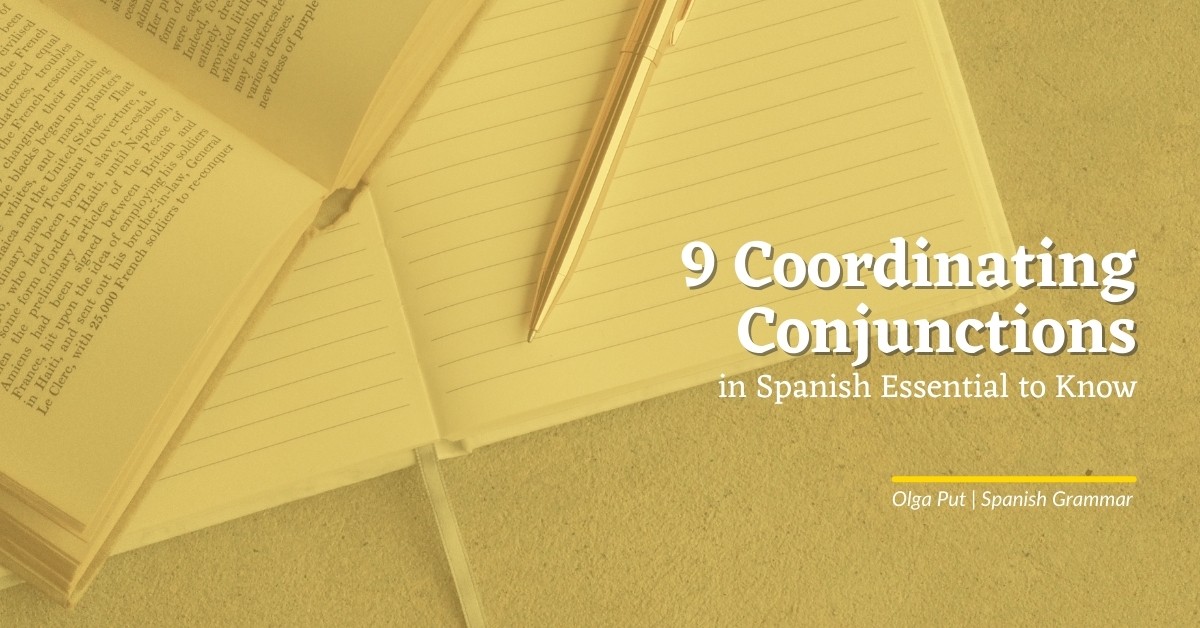
9 Coordinating Conjunctions in Spanish Essential to Know
Spanish Conjunction Conjunction Just like in any other language, Spanish uses conjunctions, or conjunciónes in Spanish, as a word that links words, phrases, and ideas together. With this handy tool, just like in most other languages, you can easily join two (or more) ideas together in the same sentence, simply by adding a word or two.
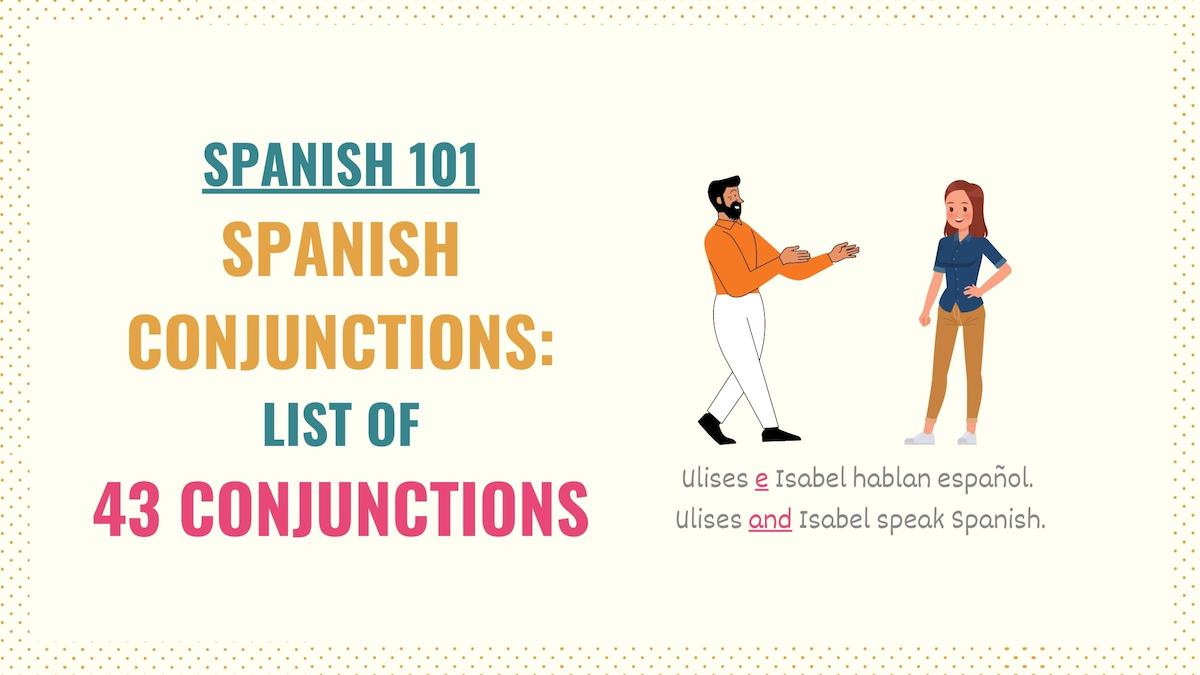
Spanish Conjunctions List of 43 Conjunctions in Spanish
Downloadable PDF Take Note: Conjunctions are one of the nine parts of speech in Spanish grammar. In short, they're a fundamental type of word you must learn to form sentences correctly. What Are Spanish Conjunctions? Spanish conjunctions are terms that join words or clauses together, so they read as one sentence. For example:

Spanish Conjunctions flashcards on Tinycards
The conjunction que ("that ") is the most used subordinating conjunction, and it's used to introduce a subordinate clause like the English conjunction "that." However, in Spanish, this conjunction cannot be omitted.